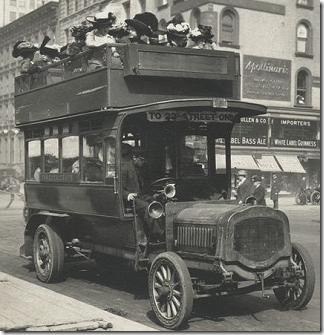 The NYPL Digital Gallery provides access to over 600,000 images that have been digitized from collections of The New York Public Library. These images include illuminated manuscripts, historical maps, vintage posters, rare prints and photographs, and illustrated books. Here are two of the many collections in the NYPL Digital Gallery.
The NYPL Digital Gallery provides access to over 600,000 images that have been digitized from collections of The New York Public Library. These images include illuminated manuscripts, historical maps, vintage posters, rare prints and photographs, and illustrated books. Here are two of the many collections in the NYPL Digital Gallery. Streetscape and Townscape of Metropolitan New York City, 1860-1942
The NYPL Digital Gallery contains a collection of urban photos entitled, Streetscape and Townscape of Metropolitan New York City, 1860-1942. This collection of photos spans a wide range of New York City locations: Hudson River mansions, including Washington Irving's home and vicinity in the 1860s; street views by Alice Austen from 1896; and a panorama of Fifth Avenue from 1911. The following image of a double-decker bus was taken by Alice Austen.
After Columbus: Four-hundred Years of Native American Portraiture
The NYPL Digital Gallery contains a collection of drawings and photos of Native Americans entitled, After Columbus: Four-hundred Years of Native American Portraiture. The following image of a Papago girl was taken by Edward S. Curtis.
Use of Images
The FAQ for the NYPL Digital Gallery states:
“The low-resolution images available on the website are suitable for immediate printing or downloading to provide good-quality reference copies for a wide range of educational, creative, and research purposes.”



No comments:
Post a Comment